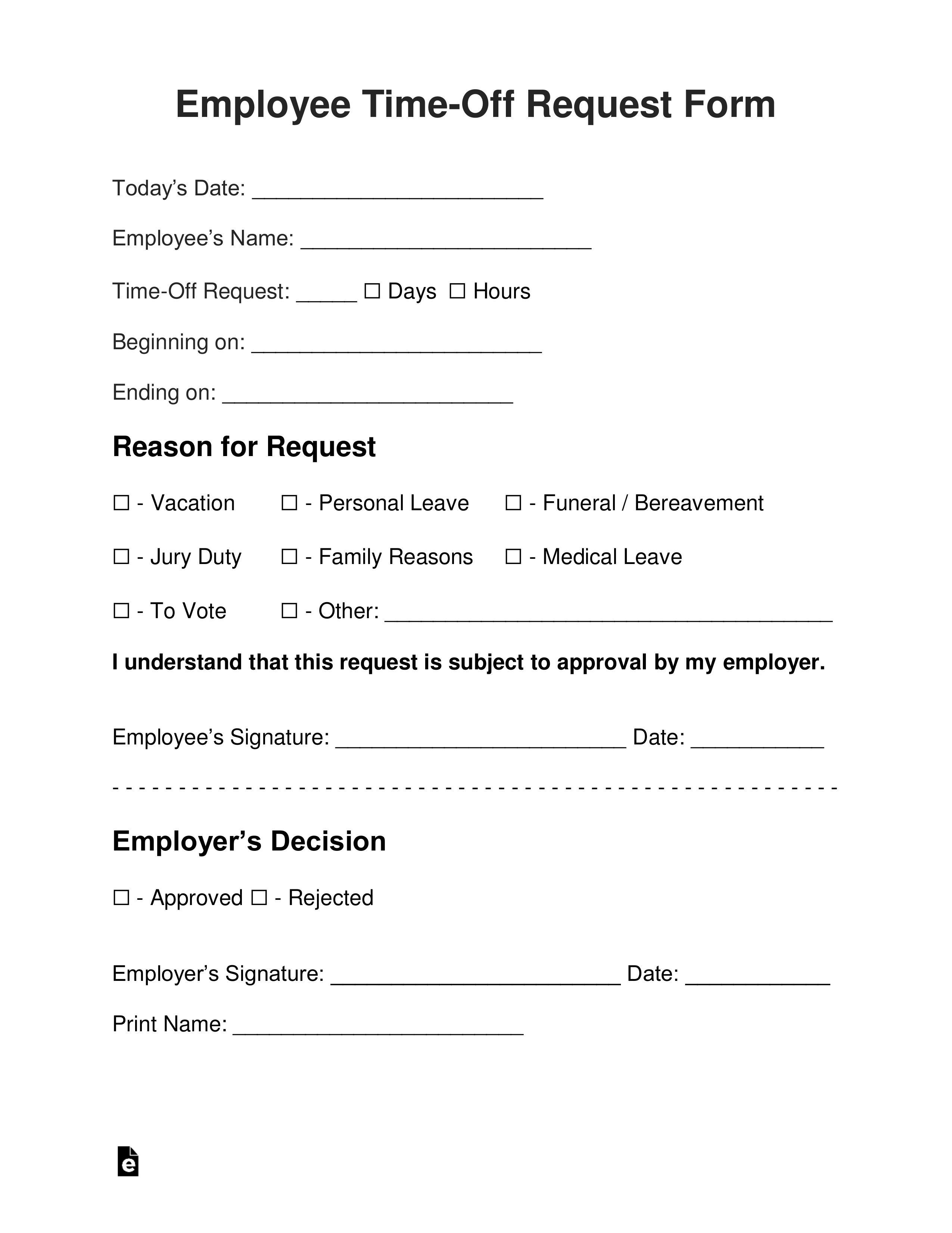Utilizing a standardized form offers several advantages. It clarifies expectations, reduces the likelihood of miscommunication, and promotes fairness and consistency in handling leave requests. For employees, it simplifies the process of requesting time off, ensuring all necessary details are included. For employers, it facilitates efficient tracking and management of absences, contributing to smoother workflow planning and reducing potential disruptions.

This article will explore various aspects of leave management, including different types of pre-designed forms, best practices for creating effective forms, legal considerations, and the integration of these tools into broader human resource systems. It will also delve into the advantages of digital platforms and the future of absence management.
Key Components of a Leave Request Form
Effective leave request forms contain essential elements that ensure clarity and efficiency in the request process. These components facilitate clear communication between employees and employers, contributing to smooth workflow management.
1: Employee Information: This section typically includes the employee’s full name, employee ID, department, and contact information. Accurate employee identification is crucial for proper record-keeping.
2: Dates of Request: Clear specification of the start and end dates of the requested absence, including specific times if applicable (e.g., half-days), is essential for scheduling and coverage arrangements.
3: Type of Leave: Specifying the type of leave requestedvacation, sick leave, personal time, bereavement, etc.allows for accurate tracking against allotted time and adherence to relevant policies.
4: Reason for Leave (Optional): While not always mandatory, providing a brief reason for the absence can be helpful for context, especially for longer durations or specific types of leave.
5: Supervisor Approval: A designated space for supervisor signature or electronic approval signifies formal acknowledgement and authorization of the request.
6: Contact Information During Leave (Optional): Providing contact information during leave can be helpful in case of emergencies or urgent work-related matters, although it’s essential to respect employee privacy and boundaries.
7: Date of Request Submission: Recording the date the request was submitted helps track processing time and ensures timely responses.
A well-designed form ensures all necessary information is captured, facilitating efficient processing, accurate record-keeping, and clear communication between employees and their supervisors. Standardization of these elements contributes to a more streamlined and equitable leave management process.
How to Create a Leave Request Form
Developing a standardized leave request form involves several key steps. A well-designed form ensures clarity, consistency, and efficiency in managing employee absences.
1: Determine Required Information: Identify essential data points needed for effective leave tracking and management. This typically includes employee details, dates of leave, type of leave, and supervisor approval. Consider legal requirements and company-specific policies.
2: Choose a Format: Select a suitable format digital or paper-based depending on organizational needs and technological capabilities. Digital formats offer advantages in terms of automation and accessibility.
3: Design the Layout: Create a clear and user-friendly layout with labeled fields for each required piece of information. Logical organization improves readability and reduces errors.
4: Incorporate Clear Instructions: Provide concise instructions on how to complete the form, including any specific procedures or required supporting documentation.
5: Establish Approval Workflow: Define the approval process, outlining who is authorized to approve leave requests and the steps involved. This ensures timely processing and prevents bottlenecks.
6: Test and Refine: Pilot test the form with a small group of employees to identify any potential issues and gather feedback. Revise and refine the form based on feedback received.
7: Communicate and Implement: Communicate the new form and procedures to all employees, providing training as needed. Ensure easy access to the form through relevant channels.
8: Regularly Review and Update: Periodically review the form and update it as needed to reflect changes in policies, regulations, or organizational needs.
A comprehensive, user-friendly leave request form promotes efficient absence management, minimizes disruptions, and ensures fair and consistent application of leave policies.
Standardized forms for requesting time off serve as vital tools for effective absence management. These structured formats streamline the request process, ensuring clarity and consistency in communication between employees and employers. From outlining essential form components to the steps involved in creating a comprehensive template, the discussion highlighted the importance of well-defined procedures. Benefits range from simplified tracking and efficient workflow planning to improved communication and reduced potential for disruptions. By implementing clear guidelines and offering user-friendly tools, organizations can foster a more balanced and productive work environment.
Effective absence management is an ongoing process requiring regular review and adaptation. As work environments evolve and technological advancements emerge, organizations should prioritize refining their processes to best suit their unique needs and ensure compliance. Embracing proactive and adaptable leave management strategies is crucial for organizational success and employee well-being. It allows for better resource allocation, minimizes operational disruptions, and contributes to a more positive and supportive work environment.